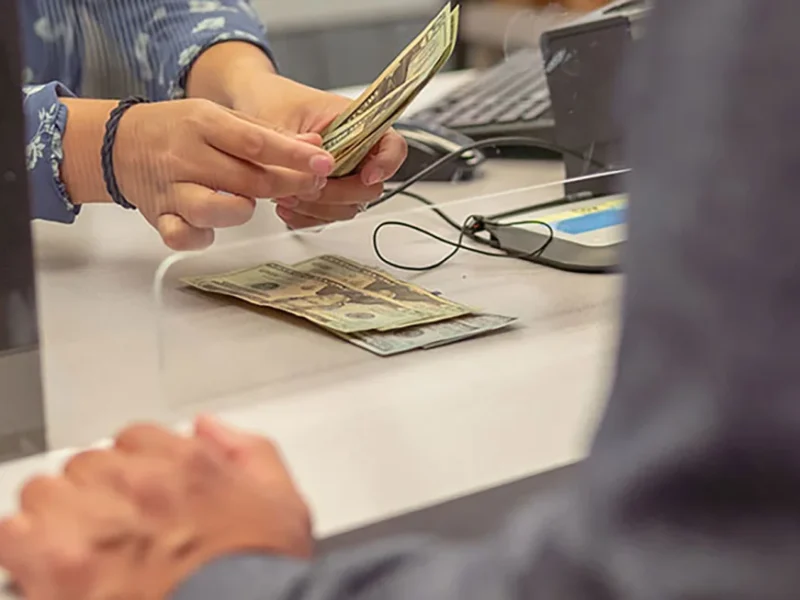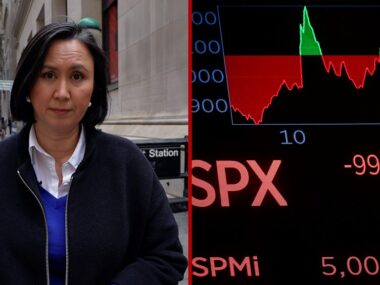The Trump administration’s tariff policies have unsettled markets, lowered business confidence, and hurt consumer outlook.
That’s why now is a crucial time to focus on managing your personal finances. Start by ensuring your savings are earning strong returns and are placed in the right types of accounts for your goals and timeline. Since the Federal Reserve chose not to cut its benchmark interest rate on Wednesday — a rate that influences borrowing costs across the economy — you can still get solid returns on your cash. That’s encouraging, especially with inflation, which stood at 2.3% in March, expected to rise due to the tariffs. Joe Brusuelas, chief economist at RSM US, told CNN’s Alicia Wallace that both headline and core inflation could exceed 4% later this year.
This means you should aim for cash returns that at least keep up with that inflation forecast.
Savings you’ll need quick access to.
If you’re setting money aside for emergencies or upcoming expenses that aren’t immediate, here are some smart options:
Online high-yield savings accounts (FDIC-insured): While traditional banks are ideal for everyday expenses like bills and groceries, you’ll earn significantly more interest by putting extra cash into an FDIC-insured high-yield savings account at an online bank. These accounts currently offer returns between 4% and 4.4%, far outpacing the 0.1% interest typically offered by major banks like Chase, according to Bankrate.com. Keep in mind that rates are variable and may drop if the Fed reduces its benchmark rate.
Online money market accounts (FDIC-insured): Another solid option is an online money market account. These accounts offer competitive rates while allowing easy access to your funds. According to Greg McBride, Bankrate’s chief financial analyst, while traditional bank MMAs offer just 0.41% on average, top online MMAs pay over 4.1% — about ten times more — and are still fully protected by federal deposit insurance.
Savings you don’t need to touch for a while.
If you’ve set aside funds for future needs like a home down payment or a year’s worth of retirement expenses, consider these options to secure strong returns over time:
Treasuries: Treasury bills and notes offer fixed returns over varying terms — bills range from 4 to 52 weeks, while notes go from 2 to 10 years. Holding them to maturity ensures a return above inflation with no loss of principal. As of Tuesday on Schwab.com, yields ranged from 3.88% to 4.33% for bills and 3.78% to 4.28% for notes. Interest is exempt from state and local taxes, making them especially attractive in high-tax states. Selling before maturity could result in capital gains or losses.
AAA-rated municipal bonds: These bonds, issued by state and local governments, provide interest that’s federally tax-free — and potentially state- and local-tax-free if issued by your home state. They’re ideal for high earners in high-tax areas. Like Treasuries, the best value comes from holding them to maturity, as they have a strong history of timely payments.
Certificates of deposit (CDs): CDs from FDIC-insured banks are a safe choice if you don’t need immediate access to your money. Schwab.com showed CDs of 3 months to 5 years paying over 4%, with many one-year CDs offering between 4.5% and 5%. Interest is taxable, and early withdrawals from bank-issued CDs often come with penalties. Brokered CDs offer wider choices but can result in principal losses if sold early.
Money market mutual funds: Averaging 4.14% according to Crane Data, with some nearing 4.4%, these funds are a convenient place to park savings while earning competitive returns. Although they don’t lock in rates, they typically offer top market yields and are considered low-risk. They usually maintain a $1 share value, but they’re not FDIC-insured and could occasionally dip below that value. If invested in municipal securities from your state, earnings may also be tax-free.
Loan interest rates holding steady.
There’s little good news when it comes to borrowing costs — except that the Fed didn’t hike rates, which could’ve made loans even more expensive. Still, managing your debt wisely matters more than any Fed decision.
Credit cards: Even if rates drop, credit card interest remains steep. As of April 30, the average rate hit 20.12%, up slightly from the week before, according to Bankrate.com. If you’re carrying a balance, Matt Schulz of LendingTree recommends applying for a 0% balance transfer card — many offer up to 21 months interest-free, giving you time to aggressively pay down what you owe.
Mortgages: On May 1, the 30-year fixed mortgage rate averaged 6.76%, down just a hair from the previous week, and lower than the 7.22% seen a year ago. Rates are expected to stay in the 6.6% to 7% range this summer. Even if the Fed cuts rates, mortgage rates likely won’t drop significantly, as they’re not directly tied to Fed policy, notes Schulz.
Auto loans: Buying a car is particularly tricky now due to high vehicle prices and elevated interest rates. According to Edmunds.com, the average new car loan in April was $41,444 at 7.1% interest over nearly six years, with payments around $744 a month. For used cars, the average loan reached $28,855 at 10.9%, with payments of $555.
Joseph Yoon from Edmunds advises buyers to separate needs from wants — like size or features — then comparison-shop both car prices and loan terms. Tools like Edmunds’ loan calculator can help you evaluate the best financing option.










